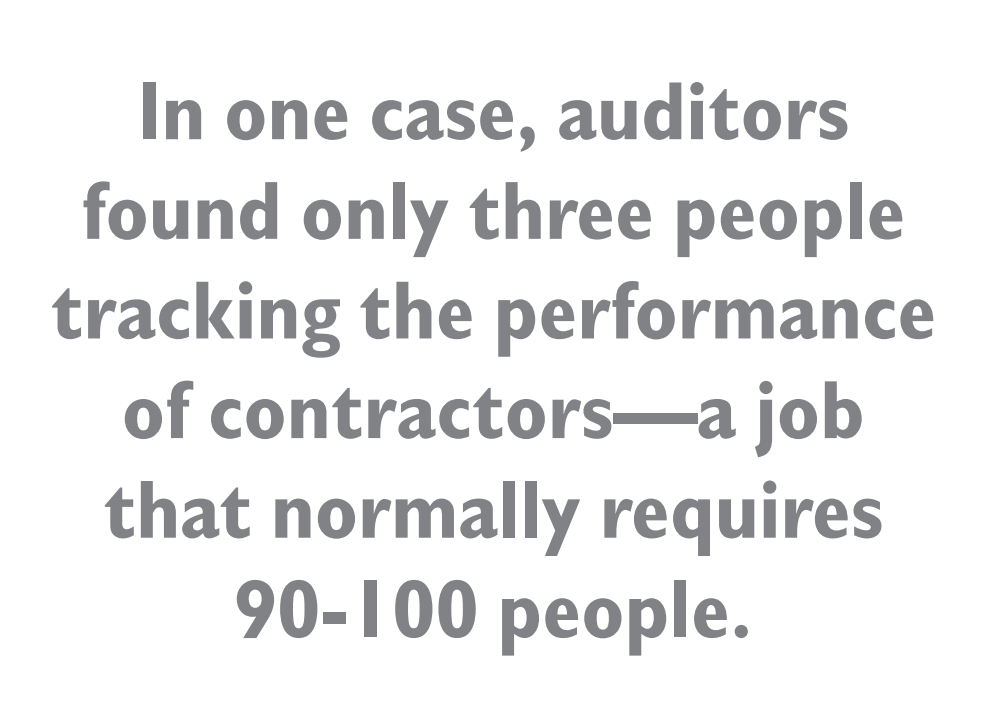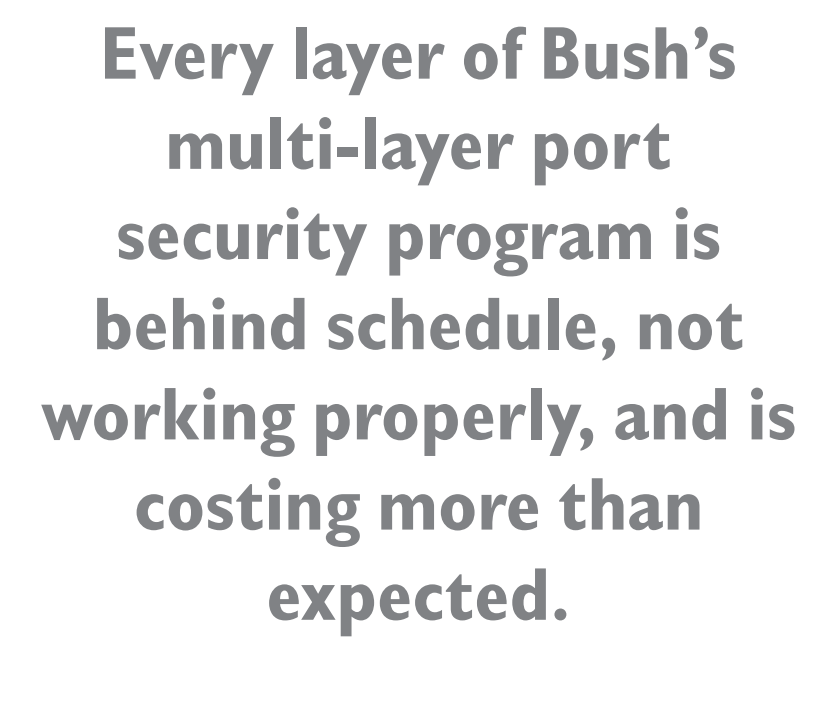“Not to worry,” insists the Bush Administration. We screen on hundred percent of every container entering the US. High risk or suspicious containers are X-rayed and checked for radioactivity.
The statement is misleading.
Over 9 million containers are never physically screened. The only thing screened is the cargo manifest that describes the content of the container. The screening is not done by a human being, but by a computer and an artificial intelligence program called the “Automated Targeting System.”

The program is supposed to look at a number of risk factors and identifies those high-risk containers that require additional screening by radiation detectors, X-ray imaging, or by opening and inspecting the contents of the container. A certain number of containers are also picked at random. About 5 percent or 500,000 containers are physically screened in this way.
The Bush Administration calls this a multi-layered approach to security and insists the ports are safer. This may sound good, but experts in security and supply chain logistics see little or no improvement in port security. The problem lay with President Bush’s policy of outsourcing critical government functions to private business and the people he put in charge of the Department of Homeland Security (DHS).
President Bush appointed career politicians and attorneys to head Homeland Security who had no realworld experience in supply-chain operations or security tradecraft. DHS was under political pressure to come up with something fast. Since the agency had no inhouse research or scientific staff, DHS was forced to pay outside consultants to come up with recommendations and plans.
DHS executives, lacking their own experience and expertise, ended up being influenced by business interest groups, academics and internal politics. They got sold on particular technologies like the smart card for Transporation Workers Identification Credential (TWIC) and the radiation portal monitors. Their “one size fits all” approach led to heavy investments and commitments in these technologies, and when the systems didn’t work as planned, they added another layer to fix the problem.

The Government Accountability Office (GAO) found that DHS was throwing money at a lot of different projects, was not prioritizing this spending on the most important projects, did not provide adequate staffing for critical programs, and basically lacked an overall strategic plan. Billions of dollars in government contracts were handed out to private business with little oversight or accountability. In one case, auditors found only three people tracking the performance of contractors— a job that normally requires 90-100 people. In another case, DHS paid contractors to watch over other contractors.
The results were predictable— systems don’t perform as required; work was not completed on schedule; projects are delayed for years or left unfinished; billions of taxpayer dollars are wasted. But businesses got their profits, guaranteed by cost-plus government contracts.

Every layer of President Bush’s multilayer port security program is behind schedule, not working properly, and is costing more than expected. Other programs that are known to be far more effective and important are underfunded—such as the need to expand and modernize the Coast Guard’s aging fleet. Toplevel positions in FEMA and other DHS agencies are filled by people with no experience but plenty of connections to the Bush campaign and Republican Party. Critical government functions are left to private contractors. ◆


